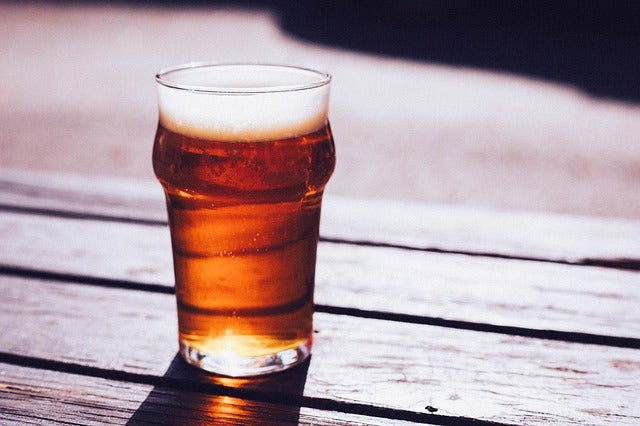Ale drinkers switch to quality over quantity - turning to half pints and brew ‘flights’
Exclusive: YouGov research suggests a growing number of Britons prefer their beer in smaller glasses

Your support helps us to tell the story
From reproductive rights to climate change to Big Tech, The Independent is on the ground when the story is developing. Whether it's investigating the financials of Elon Musk's pro-Trump PAC or producing our latest documentary, 'The A Word', which shines a light on the American women fighting for reproductive rights, we know how important it is to parse out the facts from the messaging.
At such a critical moment in US history, we need reporters on the ground. Your donation allows us to keep sending journalists to speak to both sides of the story.
The Independent is trusted by Americans across the entire political spectrum. And unlike many other quality news outlets, we choose not to lock Americans out of our reporting and analysis with paywalls. We believe quality journalism should be available to everyone, paid for by those who can afford it.
Your support makes all the difference.When it comes to beer drinking, not all glasses are born equal. Take the half pint, for example. For years it has been the poor relation of the full pint, a slang name for someone of lowly stature.
But every vessel has its day, and the half pint appears finally to be escaping the shadow of its taller, wider cousin. New research by YouGov suggests that a growing number of Britons prefer their beer in smaller glasses – half pints and (whisper it) diminutive third-of-a-pint glasses.
Today, more than one in three people choose to have a half when trying a new beer – compared with only a quarter of people opting for a full-blown pint, according to the study which will be released by the Campaign for Real Ale (Camra) this week.
The less-is-more approach is a reflection of broader tastes and a willingness to experiment. “People are becoming more open to trying new beers and moving away from the mentality of drinking pint after pint of the same brew,” said Tim Page, Camra’s chief executive. Drinkers are particularly drawn to smaller glasses when sampling stronger, more full-flavoured real ales such as barley wines, strong porters and stouts. Such sturdy brews make a half or a third of a pint a “much more sensible option” and allow people to try a range of beers, Mr Page added.
Other factors behind the rise of the half-pint include a growing fear of beer bellies and a more restrained drinking culture, says Camra.
The whims of 21st century Britons could not have been foreseen in 1698, when an Act of Parliament decreed that ale should be sold in pints or full quarts (two pints) across the land. Today’s pint, 568 millilitres to be metrically exact, is almost 200 years old, dating back to the British Weights and Measures Act in 1824.
But nothing lasts for ever, and beer is no exception.
Steve Livens, beer sommelier at the British Beer & Pub Association, said: “The greater popularity of smaller measures has got to be a sign that more and more people are trying the huge numbers of beers now available, and that pubs are encouraging customers to do so.”

One sign of the trend towards appreciating a variety of brews is the beer “platter”. Featuring four small glasses of different beers on a wooden tray, it’s the beer drinkers’ version of a tasting menu.
BrewDog, which has 21 bars in the UK, is one of a growing number of companies offering beer platters to their customers. “In our bars we serve pints, but we also serve half pints, schooners [379ml], thirds and nips, and it’s these latter measures that make up the majority of sales,” said a spokesman.
Small glasses will be much in evidence this week when the Great British Beer Festival opens on 11 August at London’s Olympia.
A pint glass is not even an option on the “ale trail” where visitors are advised to drink in third-pint measures.
The pint glass may have taken a knock, but it will always be part of British pub culture, according to Mike Benner, managing director of the Society of Independent Brewers.
“I’m sure the good old pint glass is here to stay,” he said. “But the growing importance of the half pint shows that beer drinkers are choosing quality over quantity and trying different beers.”
Join our commenting forum
Join thought-provoking conversations, follow other Independent readers and see their replies
Comments